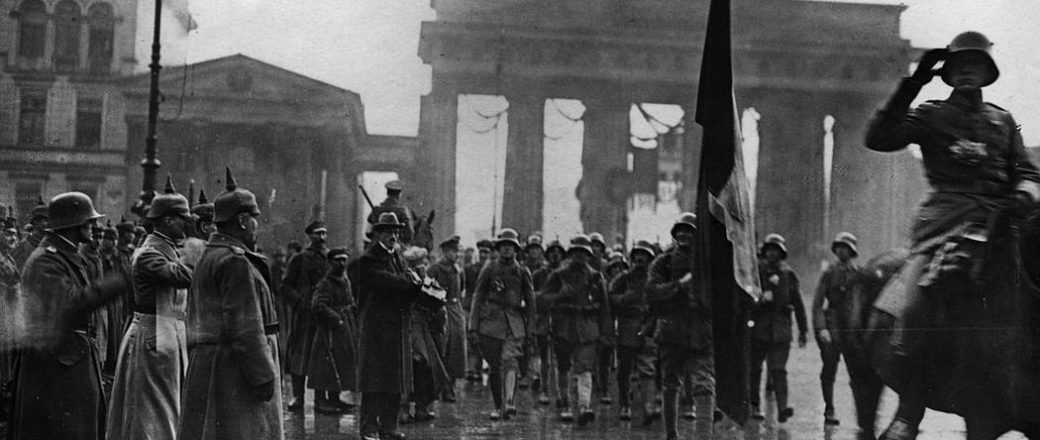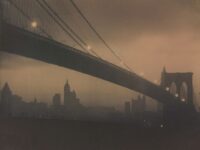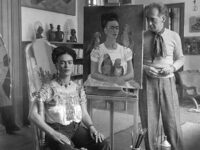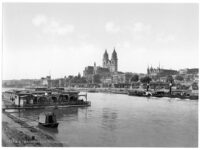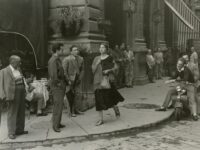The revolution in winter and spring 1918/19 was decided in the streets of the imperial capital, Berlin. Berliners celebrated the abdication of the German Emperor with demonstrations in front of the Reichstag and the palace on November 9th, 1918, in the newspaper quarter in January 1919 rolls of printing paper were used by the Spartacists to erect barricades against approaching government troops, after fighting had ceased, a large funeral procession crossed Frankfurter Allee to the cemetery in Friedrichsfelde. Press photographers were omnipresent with their big plate cameras, taking shots of orators in the crowd, soldiers behind machine-guns, vehicles carrying party posters in the National Assembly election campaign, and destroyed buildings and ravaged squares. At the same time, everyday life in the city went on. People went to the numerous cinemas with their expanding repertoire of films, enjoyed themselves at revues and cabarets, and danced the two-step and the foxtrot. The exhibition in the Museum für Fotografie shows both a photographic visual history of the revolution in Berlin and a panorama of the entertainment culture of those months.
The brothers Otto and Georg Haeckel were the most important press photographers during the first days of the revolution. As experienced war reporters, they reacted quickly to cover the spontaneous rallies on Unter den Linden and in front of the palace. The photographers worked without assignment and offered their images to publishers like Mosse or Ullstein. There are few visual records of the fighting itself. Rather, photographers took advantage of breaks in the fighting to recreate scenes on the barricades or with soldiers with readied weapons. The largest group of photos of the revolution of which the original contact prints survive is by Willy Römer. One of his photographs was even taken immediately before his own arrest by a troop of Spartacists.
Weekly newsreels in cinemas across Germany reported on the rallies and demonstrations in Berlin, showed film portraits of the ministers of the new imperial government, and confirmed the restoration of order by showing scenes from everyday life in the streets of the capital. At the same time, they solicited votes for the National Assembly. Given lengthy production times, the feature films of winter 1918/19 do not yet reflect the revolution in any way. But the suspension of censorship enabled the production of new, more daring films, which, for example, opposed the criminal persecution of homosexuals.
As a reaction to the end of the war and without as yet reckoning with the dangers of the revolution and its fighting, an unprecedented desire for pleasure-seeking reigned in Berlin during the winter and spring of 1918/19. Besides opera houses and straight theatres, Berliners frequented the popular operetta and revue theatres, as well as cinemas; they also went to ballrooms and drinking holes to dance. Some revues reacted to current issues like the housing shortage and the strikes. The poverty of war invalids was also a subject of popular music. The song ‘Bein ist Trumpf’ from 1919 alludes to the fate of four men maimed in the war: the dance with a wooden leg or prosthesis amid the workings of a world-apparatus that turns and turns without end.
Berlin in the 1918/19 Revolution
9 November 2018 – 3 March 2019
Museum für Fotografie
Jebensstr. 2
10623 Berlin
www.smb.museum/mf
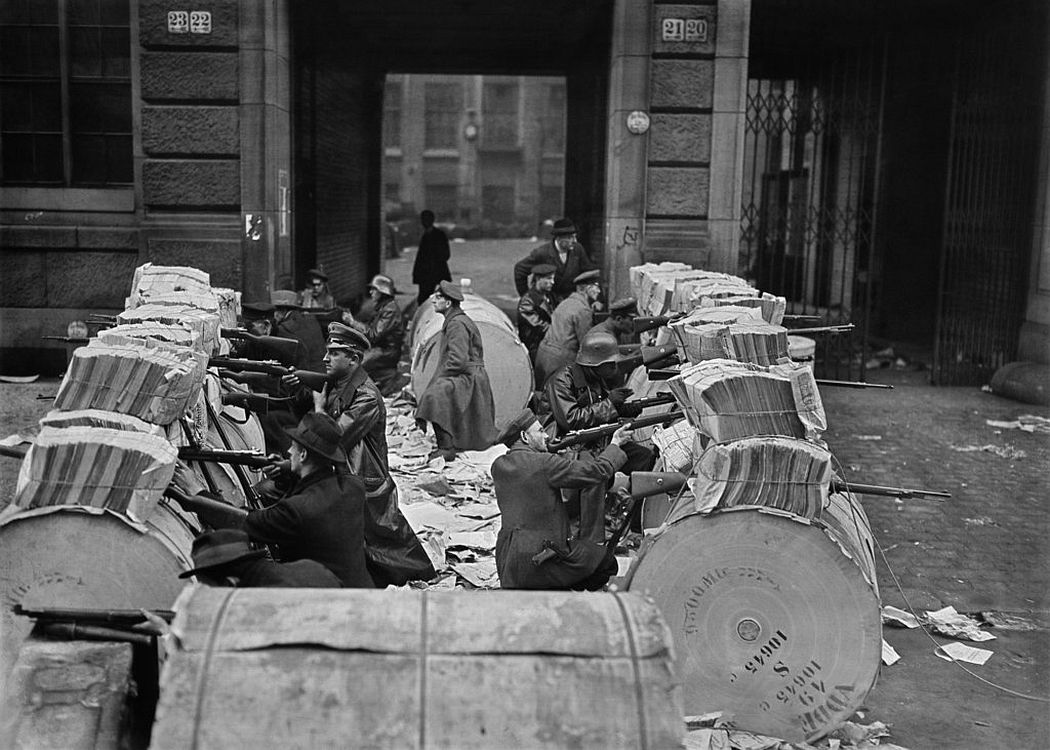
Willy Römer Spartakisten hinter Zeitungspapierrollen beim Barrikadenkampf in der Schützenstraße, 11.1.1919 © Staatliche Museen zu Berlin, Kunstbibliothek – Photothek Willy Römer / Willy Römer
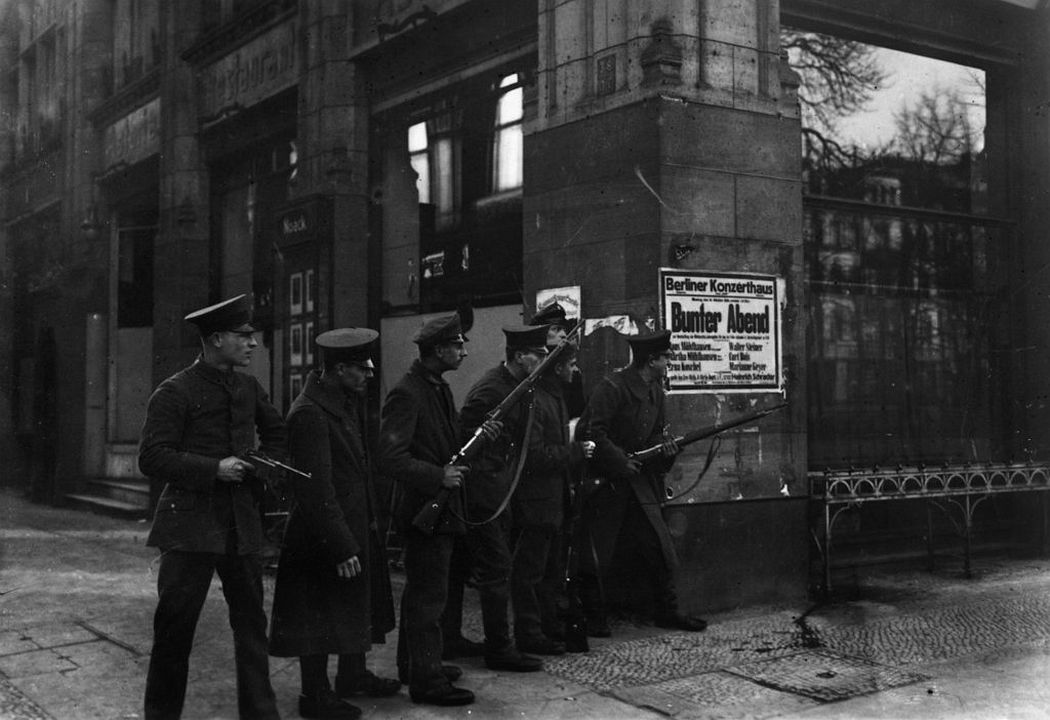
Otto und Georg Haeckel Soldaten mit Waffen Unter den Linden, Ecke Charlottenstraße, November 1918 © Staatliche Museen zu Berlin, Kunstbibliothek – Photothek Willy Römer / Gebrüder Haeckel
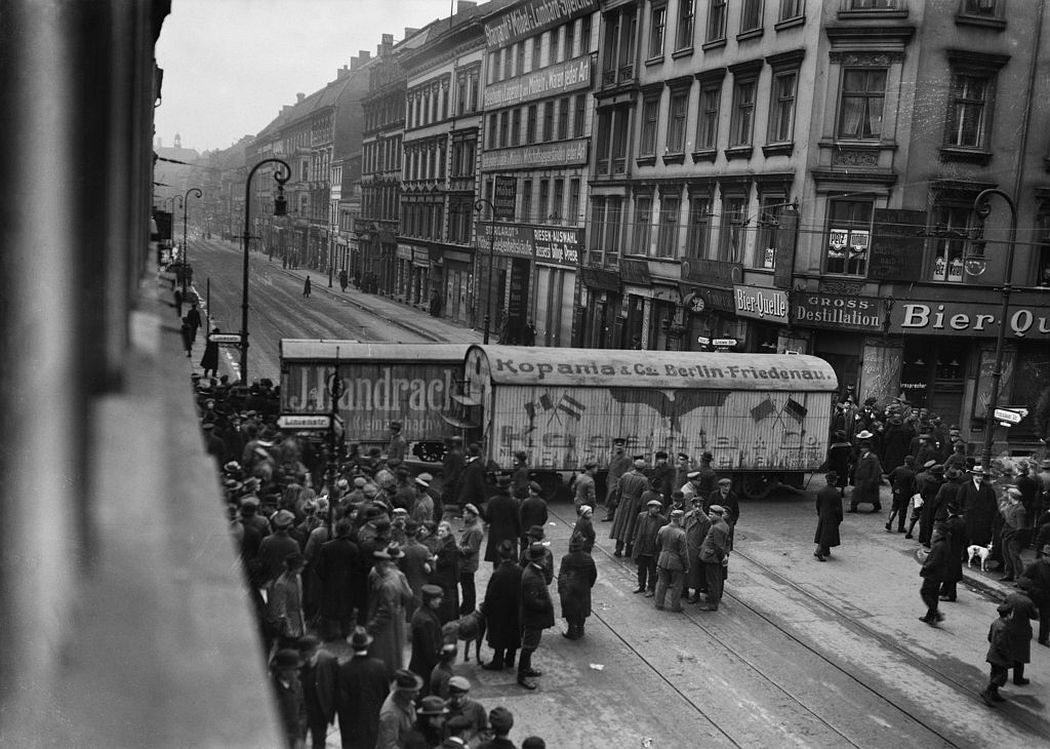
Willy Römer Möbelwagen als Barrikaden der Streikenden in der Prenzlauer Straße, 7.3.1919 © Staatliche Museen zu Berlin, Kunstbibliothek – Photothek Willy Römer / Willy Römer
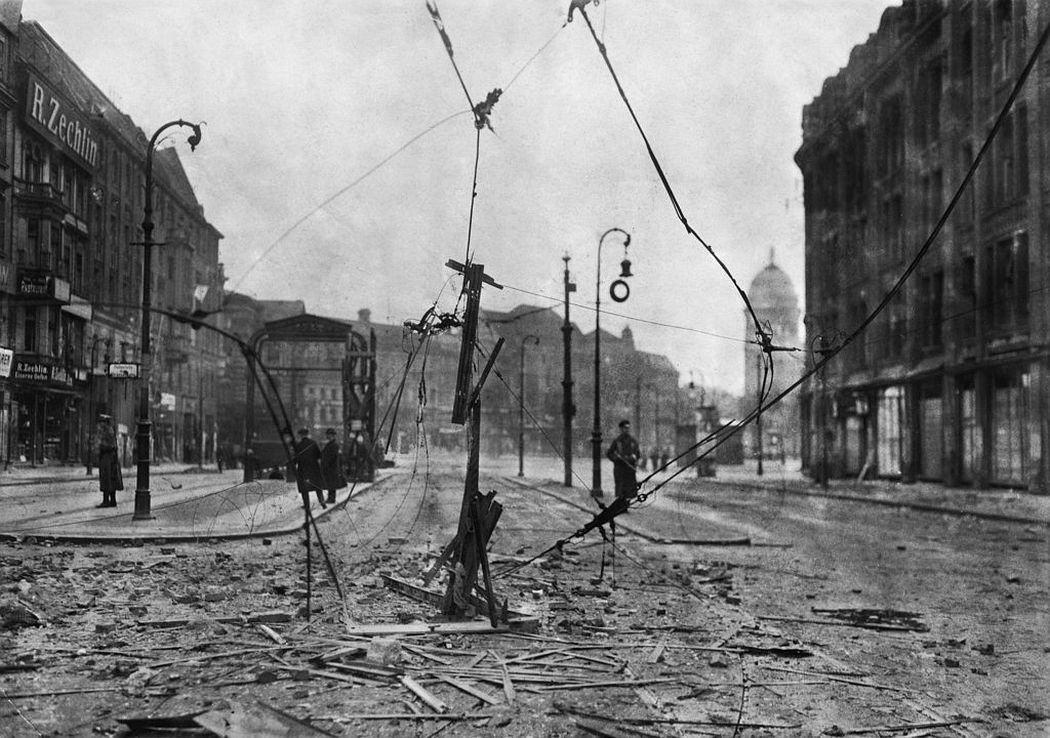
Willy Römer Kampfplatz Alexanderplatz mit den heruntergeschossenen Oberleitungen der Straßenbahn, 8.3.1919 © Staatliche Museen zu Berlin, Kunstbibliothek – Photothek Willy Römer / Willy Römer
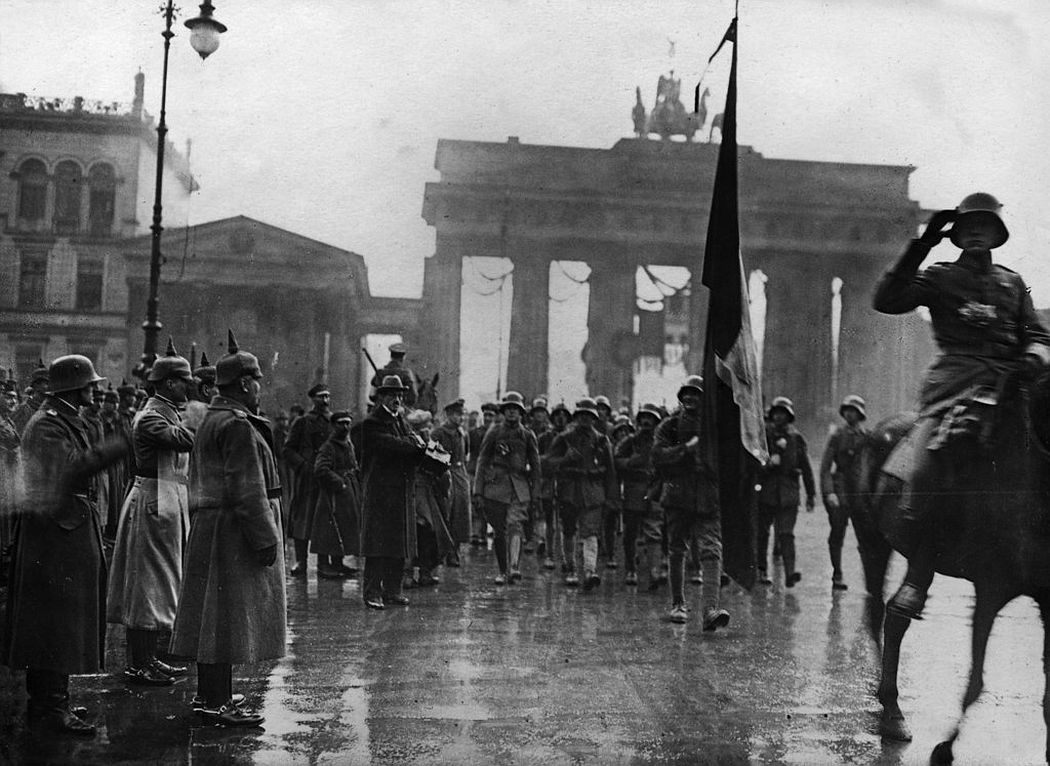
Willy Römer Einzug der Jäger-Division, Vorbeimarsch der Garde-Jäger vor General Arnold Lequis, links der Pressefotograf Walter Gircke mit seiner Kamera, 10./11.12.1918 © Staatliche Museen zu Berlin, Kunstbibliothek – Photothek Willy Römer / Willy Römer
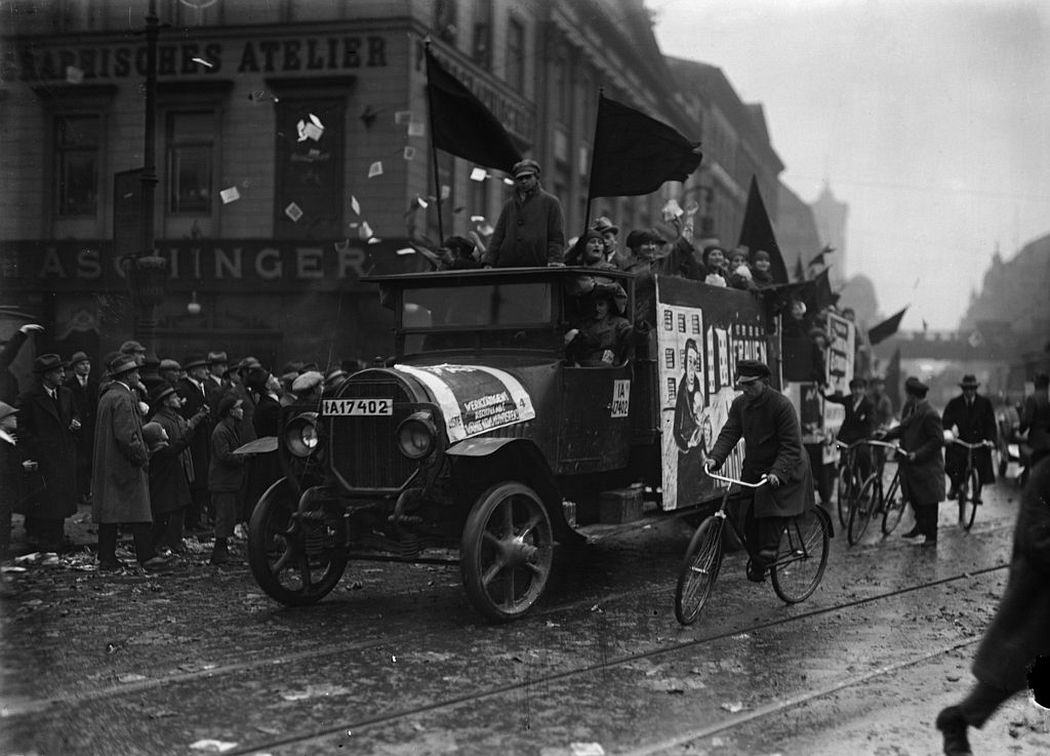
Willy Römer Wahlpropaganda mit Auto, Fahnen und Plakaten „Wählt Liste 4“, Januar 1919 © Staatliche Museen zu Berlin, Kunstbibliothek – Photothek Willy Römer / Willy Römer
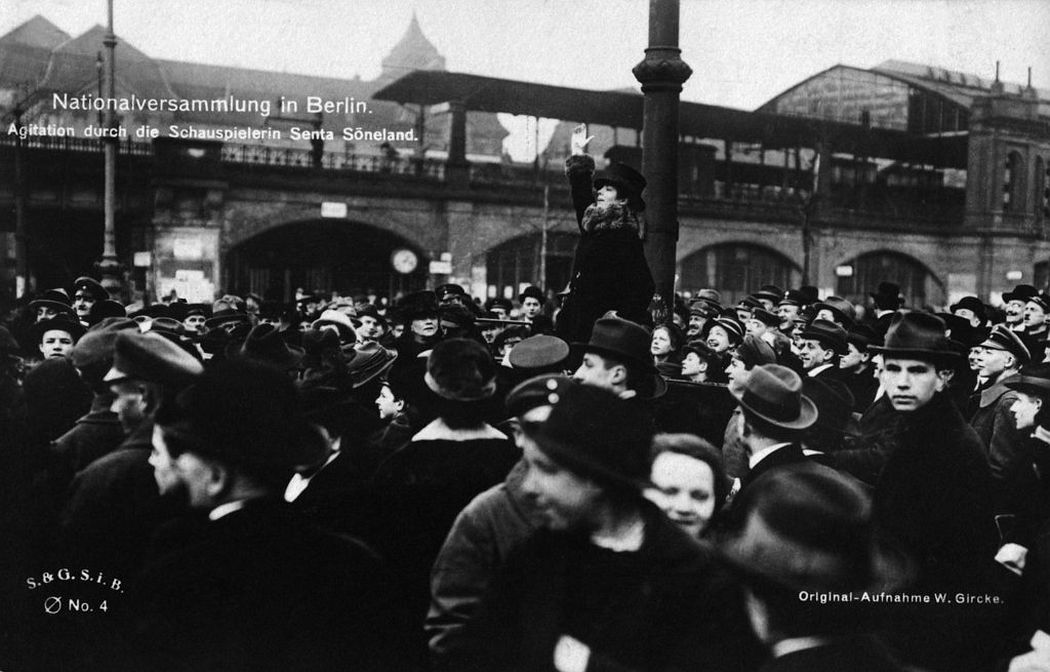
Walter Gircke Wahlen zur Nationalversammlung in Berlin. Agitation durch die Schauspielerin Senta Söneland vor dem Bahnhof Zoologischer Garten, Januar 1919 Postkarte © bpk / Walter Gircke
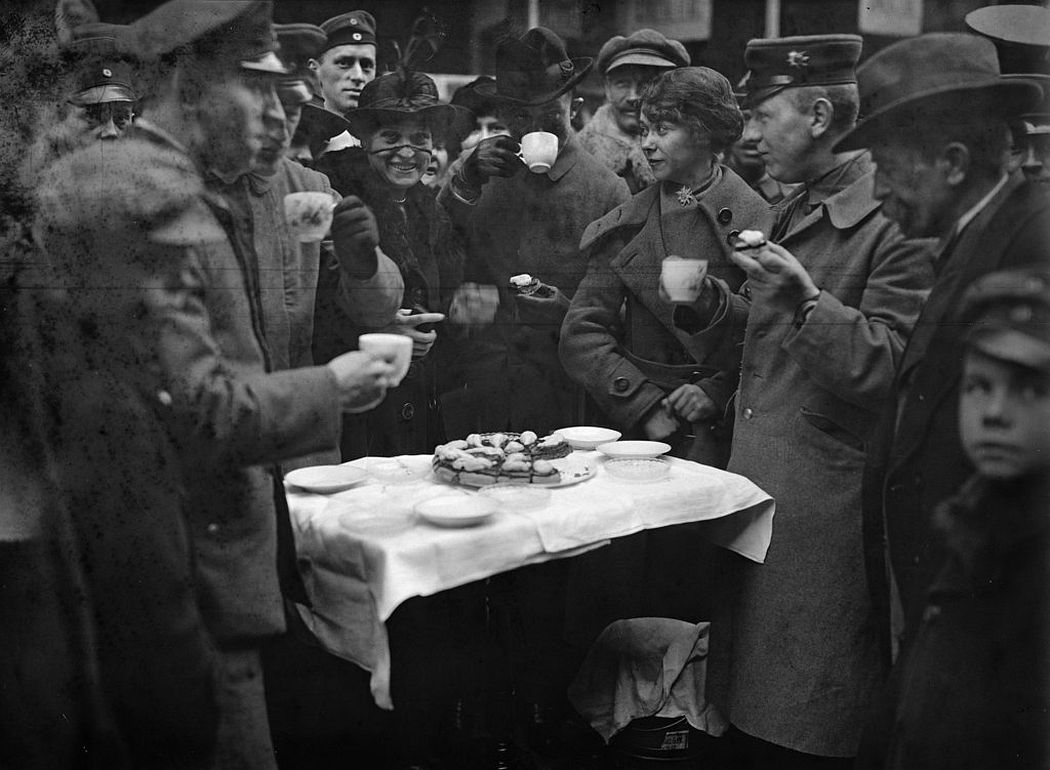
Willy Römer Die Spielhölle vor dem Arbeitsnachweis in der Gormannstraße. Damit die arbeitslosen Spiele sich auch stärken können, gibt‘s gleich am Nebentisch Kaffee und Kuchen, 18. Januar 1919 © Staatliche Museen zu Berlin, Kunstbibliothek – Photothek Willy Römer / Willy Römer

